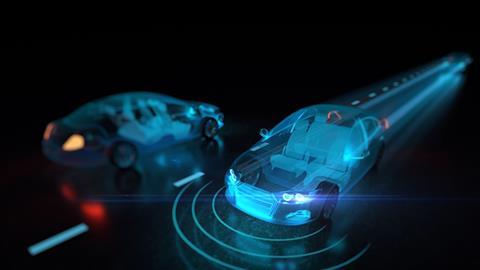Industry commentators still have questions around the safety of technology such as ALKS, however the UK government is eager to have automated driving on Britain’s roads this year
By Editor Katie Scott
The drive for automated lane keeping system (ALKS) technology to be introduced onto Britain’s roads this year continues as Zenzic – the body spearheading the self-driving revolution in the UK – today (9 September 2021) confirmed funding for a proof of concept consumer safety rating for automated driving systems (ADS). It will be delivered in conjunction with motor insurance research centre Thatcham Research and CAM Testbed UK partners.
The consumer safety rating aims to support the safe adoption of automated driving systems by giving UK motorists – and their insurers – greater clarity around the performance and safe use of automated technology.

The scheme, which will combine both virtual and physical testing, seeks to be the first global initiative to independently rate the performance of automated driving systems. Thatcham and Zenzic even hope their resulting rating will be adopted by consumer safety organisations such as the European New Car Assessment Programme.
Initially, the new independent rating will centre around ALKS, which the UK government confirmed could be legally defined as a self-driving technology back in April this year.
The project – which aims to have a proof of concept delivered by March 2022 - is funded by the government’s Centre for Connected and Autonomous Vehicles, will be coordinated by Zenzic and led by Thatcham Research.
Participating CAM Testbed UK partners include Automotive Electronics Innovation (AESIN), Warwick Manufacturing Group (WMG, the Midland Future Mobility Testbed), HORIBA Mira (Assured CAV) and IDIADA (CAVWAY).
Speaking on today’s announcement, Jonathan Hewett, Thatcham Research’s chief executive, said: “The advent of automated driving promises to bring a host of benefits spanning safety, mobility and the environment. To realise this potential, we are developing an independent consumer safety rating scheme to foster confidence in the technology and its ability to control the vehicle.
“Not all automated driving systems will be made equal. Therefore, an independent consumer safety rating will drive best practice, while helping consumers to make informed choices and trust that it is safe to relinquish control.”
Computer versus human
Although insurance industry commentators can see the appeal of automated technologies in vehicles and how these could reduce human errors and therefore claims, the market has been tentative in applauding the march towards automated driving due to ongoing safety concerns.
This morning, I chatted to Steven Turner, barrister and head of the personal injury and clinical negligence team at Parklane Plowden Chambers. He queried whether ALKS would really get to the root cause of what caused crashes on motorways.
He told me: “Lane keeping technology is designed to prevent the inadvertent drifting out of the lane, mainly on motorways. How many accidents really are caused by that rather than someone deliberately changing lanes when they’ve failed to see a car in their blind spot or another vehicle in their blind spot?

“Will the lane keeping technology overpower the driver if the driver steers out of the lane [but] there’s another vehicle there? That’s a question I don’t know the answer to. But if it’s just lane keeping technology that keeps you in the lane unless and until there’s driver input, I wonder how many lane drift claims there are.”
He argued that because motorway claims often occurred at high speed and included multiple vehicles, these were often of “significant value”, meaning technology such as ALKS could create “some saving” and “will clearly cut out that type of accident” – however, “the majority of claims are driver error it seems to me, certainly the ones I see, rather than that gentle drifting out of a lane”.
For Turner, the crux of the matter lies in “the interface between that computer brain and the human brain”.
He explained: “At what point does the computer brain yield to the human input on the steering wheel or the accelerator? I don’t know the answer to that, but if you’ve got someone who deliberately steers across a lane because they want to change lanes and they just haven’t seen something in their blind spot, will the system change that or just keep you in your lane as you roll along the motorway? That for me is interesting.”
The UK government certainly has its foot on the accelerator in terms of wanting to lead the automated driving revolution – and with many automated driving assistance systems already commonplace within a variety of vehicles, you could argue that it’s not too much of a stretch of the imagination to see why the government is keen to press ahead.
However, there still seems to be more questions than answers when it comes to driver and passenger safety in conjunction with automated driving – this is undoubtedly a concern for the insurance sector attempting to price risks for the next generation of connected cars; let alone the fact that no insurance firm wants to see its policyholders come to any harm either.
Zenzic and Thatcham’s consumer safety rating is a step in the right direction, but with the government urging automated driving on UK roads this year, will the bodies’ findings be too late?
Hosted by comedian and actor Tom Allen, 34 Gold, 23 Silver and 22 Bronze awards were handed out across an amazing 34 categories recognising brilliance and innovation right across the breadth of UK general insurance.




















































No comments yet